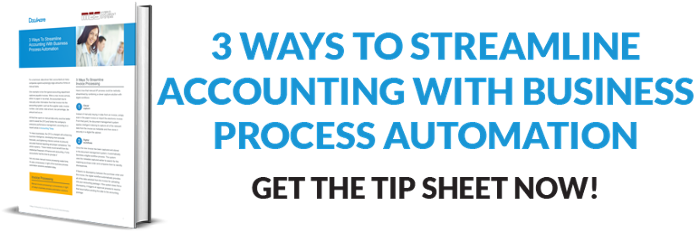 Days sales outstanding (DSO) is a calculation designed to estimate the average length of a company’s collection process. Reducing this timeframe and shortening the amount of time it takes your company to be paid can help benefit your organization in a number of ways. This blog will focus on DSO elements that you might not have considered and explain ways to reduce DSO for your organization.
Days sales outstanding (DSO) is a calculation designed to estimate the average length of a company’s collection process. Reducing this timeframe and shortening the amount of time it takes your company to be paid can help benefit your organization in a number of ways. This blog will focus on DSO elements that you might not have considered and explain ways to reduce DSO for your organization.
1. The Higher the DSO, the Greater Your Cash Flow Issues
Every business relies on cash flow at its core. Without cash flow and the resources to bring in talented staff and harness the latest technology, the company will suffer from decreased performance and eventually lose its position in the marketplace. Firms that target reducing DSO as a policy will grow over time and give their talented team members the resources they need to make proactive decisions for the company.
2. Cash On Hand Means You Don’t Have to Pay Interest
Access to cash flow means your company isn’t dependent on business loans that might have high interest charges. It also means the company’s debt load can be limited, freeing the decision-makers within the company to make targeted decisions solely dependent on the right choice for the firm and not on any cash flow limitations.
3. Timely Billing is the Easiest Way to Reduce DSO
The data shows that timely billing and giving customers the information they need to pay is the easiest and most direct way to reduce DSO. One of the most effective ways to reduce DSO is through automating your collection process. For example, if your company takes 17 days on average to present an invoice, and then the average customer takes another 10 days to pay, your DSO might be 27 days. Automated collection systems can send out an invoice immediately to the customer, thereby cutting down the average DSO to 10 days.
4. Automation Helps Further Reduce DSO
Beyond timely billing, automation offers a broad range of net benefits that impact your DSO. For example, because the latest automation tools provide you with an end-to-end view of your accounting procedures and data, you’ll be able to answer customer queries regarding invoices and billing with precision immediately. There’s no back-and-forth discussion about the data and agreements. The data is clear and at your accounting team’s disposal. Your accounting team has the power to further reduce DSO and present clients with accurate billing information in a consolidated timeframe.
5. You Can Free Your Company from Legacy Accounting Systems
Legacy, manual accounts receivable tools are increasing the average company’s DSO and limiting the value provided by their accounting staff. It’s now the ideal time to join the thousands of other companies across the country and review the value that automated accounts receivable tools can bring to your organization. Beyond reducing your DSO, you’ll achieve better customer relationships, a more proactive accounting department, and spend less money on accounting administration.


